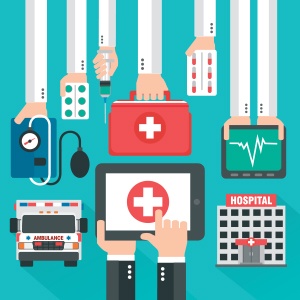 Healthcare costs in the United States have risen steadily over the past couple decades. In fact, the U.S. is ranked #1 in terms of total health expenditure per capita. One method healthcare organizations are trying in order to reduce their cost of operations – and pass those savings onto patients – is the use of big data and healthcare analytics.
Healthcare costs in the United States have risen steadily over the past couple decades. In fact, the U.S. is ranked #1 in terms of total health expenditure per capita. One method healthcare organizations are trying in order to reduce their cost of operations – and pass those savings onto patients – is the use of big data and healthcare analytics.
According to a report from McKinsey & Company, U.S. healthcare expenses now represent 17.6 percent of GDP, but trends in big data could play a major role in helping to reduce those costs by an estimated $450 billion. A study outlined in Health Affairs details ways in which healthcare analytics are being used to meet the goal of reduced costs. One reason healthcare providers have so much data to plug into healthcare analytics is the Centers for Medicare and Medicaid (CMS) Electronic Health Records (EHR) Incentive Program requiring that hospitals and physicians convert their paper systems to EHRs.
Advantages of Analytics
While the EHR incentive program has helped to produce an enormous amount of clinical data that had not been electronically available prior, it takes real know-how to make something meaningful of that data. Using healthcare analytics in the right way can enable healthcare organizations to reduce waste, improve overall performance, increase efficiency, track quality care measures, streamline operations and focus on more patient-centric care. It allows them to transform data into actionable insights to find and reduce inefficiencies, make better-informed clinical decisions and improve financial and clinical performance, all without sacrificing quality of care. All of these benefits combine to reduce costs for a healthcare organization.
Following are a few specific examples of areas where healthcare analytics can be used to achieve benefits and therefore reduce costs:
Hospital Workflows – Healthcare organizations comprised of multiple facilities can use information gleaned from analytics to analyze prior incident rates and patterns in various geographic areas, allowing them to better strategize the best workflows for use across the board.
Patient Volumes – By utilizing predictive analytics to forecast patient volumes, healthcare providers can utilize an appropriate number of staff members, resulting in reduced patient wait times and improved patient outcomes.
Government Regulations – Many healthcare organizations use data obtained through analytics to meet specific federal guidelines such as those in the Hospital Readmissions Reduction Program (HRRP).
Readmissions – The use of predictive analytics to identify at-risk patients at time of admission enables healthcare providers to customize patient care to reduce costly readmissions.
Healthcare analytics also can be used to eliminate unnecessary testing, reduce emergency room visits, quantify patient outcomes, readmissions, emergency department visits and utilization of high-cost services. Organizations can compare their performance to competitors to negotiate more lucrative payer contracts and optimize their resources accordingly. Perhaps most importantly, they can use analytics to reduce the number of cumulative waste issues and improve their bottom line.
Learn More
Syntrix Consulting can help make sure your hospital is utilizing big data, predictive analytics, dashboards and more of its EMR data to its fullest potential. For more information about our firm, contact us today for a consultation or download our FREE eBook to see what a successful Epic Reporting implementation looks like:
